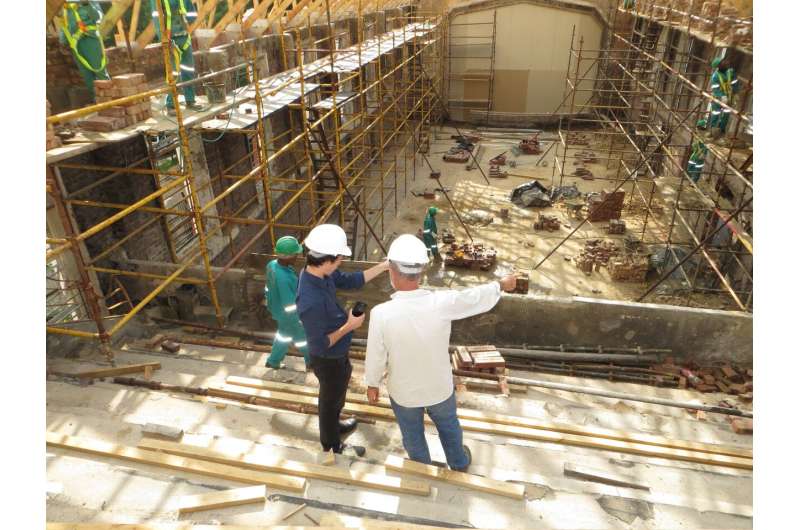
Large construction projects in old cities often involve major interventions in the urban environment. In a new thesis from the University of Gothenburg, two strategies are analyzed for managing the cultural heritage when the excavators roll in: Preserve as much of the environment as possible or add new cultural values as compensation.
Infrastructure projects in historic urban environments often cause buildings, streets and parks to disappear or change. As more and more people settle in cities, among other things, two important goals must be addressed—the future’s need for sustainable transport and the conservation of cultural heritage. In a thesis, Ph.D. student Maitri Dore analyzes how two large infrastructure projects; the West Link Project train tunnel in Gothenburg and the Mumbai Metro in Mumbai, India, handle this complexity.
“The two projects both have a major impact on the urban environment. But the strategy for managing cultural heritage looks different. In Mumbai, builders want to minimize physical and visual damage to the cultural environment. In Gothenburg, they also have that approach but also try to compensate for the construction project’s intervention by adding new cultural values to the urban environment by putting up information signs or displaying objects that relate to the site’s history,” says Maitri Dore.
During the construction of the West Link, many old boats were found hidden in the ground, and during the tunnel work at the fortification Skansen Lejonet, remains of an old defense facility were found. By documenting and presenting these finds, the construction project contributes to cultural heritage with new knowledge.
Traditional focus on natural values
The focus of the legislators in Sweden has not previously been on compensating the cultural heritage in new construction. The law is mostly written to protect environments from nature’s perspective. Laws and policies have aimed to minimize and compensate for losses of natural values, such as biodiversity and air quality. Protecting cultural or historical values, linked to the experience of a place, has been considered difficult to compensate because they are viewed as irreplaceable.
“In practice, there are hardly any precedents for compensation for cultural heritage loss. Therefore, it was interesting to investigate two large infrastructure projects that affect officially designated historic environments, such as the Haga district in Gothenburg,” says Maitri Dore.
Clear differences in approaches
The difference between the projects’ way of protecting cultural heritage is clear. In the subway construction in Mumbai, the aim is to preserve the cultural environment as far as possible. For example, a train station is planned to be built without a roof so that travelers can see the old, surrounding environment.
During the construction of the West Link in Gothenburg, there were several investments in compensatory measures planned. Signs and new designs will be created that link to activities that have historically existed on the site. Archaeological remains that were unearthed during construction are to be exhibited. The measures aim to create new qualities in the urban space.
“The difference in approach may be due to the fact that the compensation has been a requirement from the authorities in order for the construction of the West Link to be allowed. The construction of the tunnel has become an opportunity to lift the cultural heritage in different ways and City of Gothenburg is involved in it. In Mumbai, on the other hand, the heritage committee only has an advisory role,” says Maitri Dore.
Many factors that govern
Maitri Dore believes that both methods, compensation and preservation, are the result of heavy negotiations during the planning of the infrastructure projects. The methods depend on different institutional and political frameworks, multiple actors and different constraints. In this context, it can be difficult to implement new approaches to cultural heritage management.
“Compensation can be an option for dealing with major changes in historic environments when the city grows and must be adapted to the needs of the inhabitants,” says Maitri Dore.
More information:
From Gone to Gain: Exploring the Scope of Historic Environment Compensation in Planning. hdl.handle.net/2077/79023
Citation:
Compensation can cover for loss of cultural heritage in construction projects, researcher finds (2024, January 11)
retrieved 12 January 2024
from https://phys.org/news/2024-01-compensation-loss-cultural-heritage.html
This document is subject to copyright. Apart from any fair dealing for the purpose of private study or research, no
part may be reproduced without the written permission. The content is provided for information purposes only.

